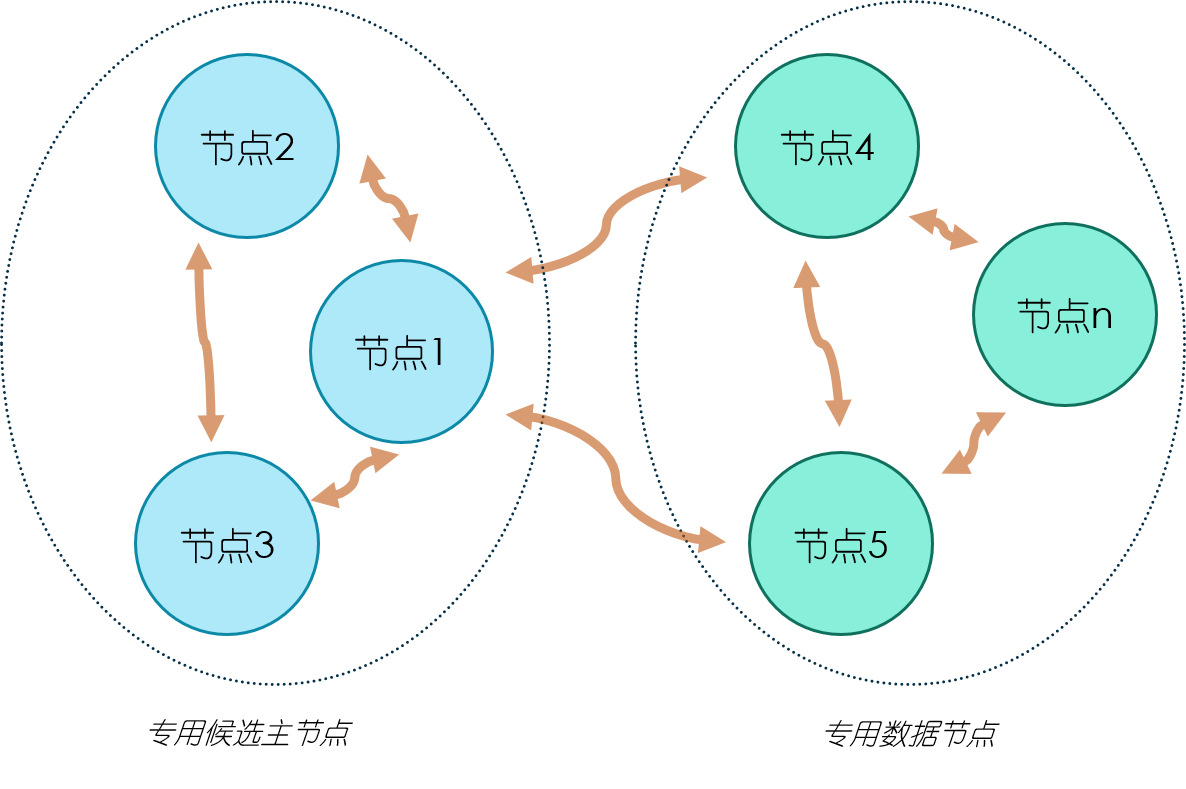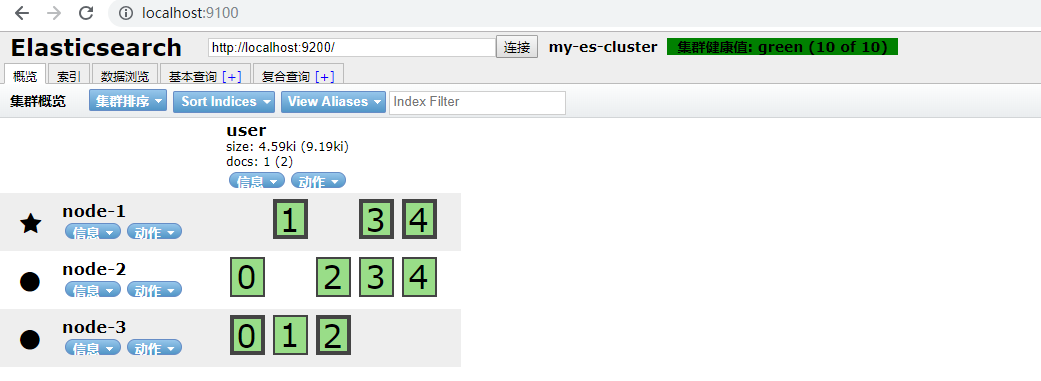Elasticsearch的一大优势就是能够十分轻松的进行分布式/集群部署,本文将主要讲解Elastic的集群搭建。
一、基础概念
1. 1 节点类型
| node.master | node.data | 节点类型 |
|---|---|---|
| true(default) | true(default) | 候选主节点 && 数据节点 |
| true | false | 候选主节点 |
| false | true | 数据节点 |
| false | false | 客户端节点 |
1.1.1 候选主节点(Master-eligible node)
一个节点启动后,就会使用Zen Discovery机制去寻找集群中的其他节点,并与之建立连接。集群中会从候选主节点中选举出一个主节点,主节点负责创建索引、删除索引、分配分片、追踪集群中的节点状态等工作。Elasticsearch中的主节点的工作量相对较轻,用户的请求可以发往任何一个节点,由候选主节点节点负责分发和返回结果,而不需要经过主节点转发。
正常情况下,集群中的所有节点,应该对主节点的选择是一致的,即一个集群中只有一个选举出来的主节点。然而,在某些情况下,比如网络通信出现问题、主节点因为负载过大停止响应等等,就会导致重新选举主节点,此时可能会出现集群中有多个主节点的现象,即节点对集群状态的认知不一致,称之为脑裂现象。为了尽量避免此种情况的出现,可以通过discovery.zen.minimum_master_nodes来设置最少可工作的候选主节点个数,建议设置为 候选主节点数 / 2 + 1,也就是保证集群中有半数以上的候选主节点。
候选主节点的设置方法是设置node.mater为true,默认情况下,node.mater和node.data的值都为true,即该节点既可以做候选主节点也可以做数据节点。由于数据节点承载了数据的操作,负载通常都很高,所以随着集群的扩大,建议将二者分离,设置专用的候选主节点。当我们设置node.data为false,就将节点设置为专用的候选主节点了。
1 | node.master = true |
1.1.2 数据节点(Data node)
数据节点负责数据的存储和相关具体操作,比如CRUD、搜索、聚合。所以,数据节点对机器配置要求比较高,首先需要有足够的磁盘空间来存储数据,其次数据操作对系统CPU、Memory和IO的性能消耗都很大。通常随着集群的扩大,需要增加更多的数据节点来提高可用性。
前面提到默认情况下节点既可以做候选主节点也可以做数据节点,但是数据节点的负载较重,所以需要考虑将二者分离开,设置专用的数据节点,避免因数据节点负载重导致主节点不响应。
1 | node.master = false |
1.1.3 客户端节点(Client node)
客户端节点就是既不做候选主节点也不做数据节点的节点,只负责请求的分发、汇总等等,也就是下面要说到的协调节点的角色。这样的工作,其实任何一个节点都可以完成,单独增加这样的节点更多是为了负载均衡。
1 | node.master = false |
1.1.4 协调节点(Coordinating node)
协调节点,是一种角色,而不是真实的Elasticsearch的节点,你没有办法通过配置项来配置哪个节点为协调节点。集群中的任何节点,都可以充当协调节点的角色。当一个节点A收到用户的查询请求后,会把查询子句分发到其它的节点,然后合并各个节点返回的查询结果,最后返回一个完整的数据集给用户。在这个过程中,节点A扮演的就是协调节点的角色。毫无疑问,协调节点会对CPU、Memory要求比较高。
1.2 拓扑结构
拓扑图一是一个简单的集群部署,适用于数据量较小的场景。集群中有三个节点,三个都是候选主节点,因此我们可以设置最少可工作候选主节点个数为2。节点1和2同时作为数据节点,两个节点的数据相互备份。
这样的部署结构在扩展过程中,通常是先根据需要逐步加入专用的数据节点,最后考虑将数据节点和候选主节点分离,也就发展为了拓扑图二的结构。在拓扑图二中,有三个专用的候选主节点,用来做集群状态维护,数据节点根据需要进行增加,注意只增加专用的数据节点即可。
二、集群搭建
2.1 拷贝副本
本次以搭建三节点的单机集群为例,拷贝出两份副本,如图所示。然后清理两份副本中的data和logs文件夹下的所有内容,否则启动集群是会报failed to send join request to master...的错误。
2.2 修改配置文件
因为只是一个三节点的例子,就不在手动配置候选主节点和数据节点。如果需要,在配置文件中设置
node.master和node.data的值即可。
修改每个节点的config/elasticsearch.yml文件:
1 | # ======================== Elasticsearch Configuration ========================= |
我就配了以上8个地方,更多配置参考官方文档,需要注意的地方有:
-
如果运行集群报
java.io.CharConversionException: Invalid UTF-8 start byte...的错误,删除配置文件中的中文。 -
配置文件书写的时候属性必须顶格写,之后是一个英文冒号,之后空格,然后是属性值。不能使用tab键。
-
如果报
failed to send join request to master...的错误,清除拷贝的两个副本的data和logs文件夹内容。
2.3 运行集群
分别运行三个节点的bin/elasticsearch.bat,如果手动指定了候选主节点,优先启动候选主节点。(因为我这里没有手动设置,所以随意启动即可)
启动后使用head插件查看:
可以看到我们之前创建的索引user的五个分片和一个备份被分散存储到各个节点上。










